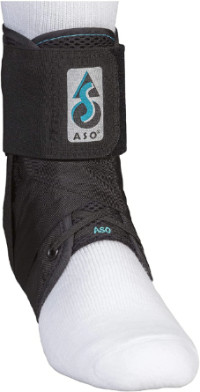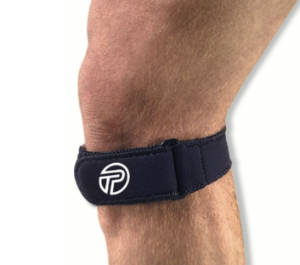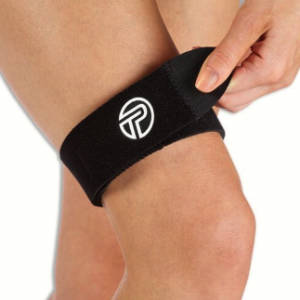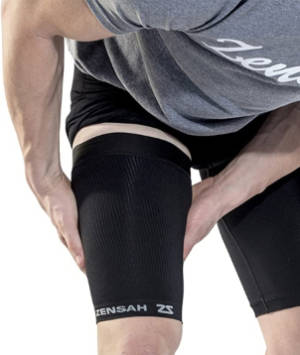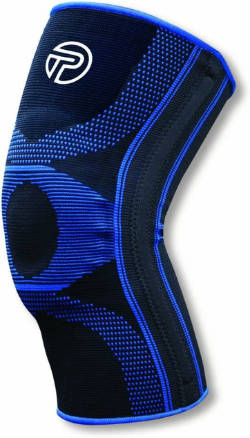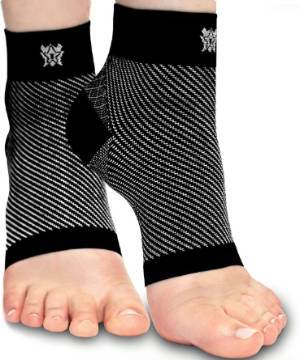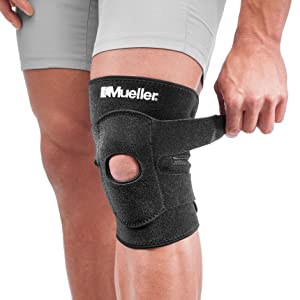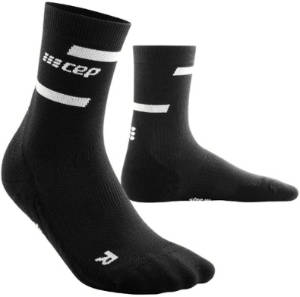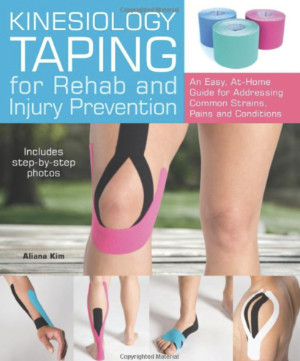
If you are a hiker or backpacker, you understand the frustration of being sidelined due to a leg injury or pain. However, there are many conditions such as knee pain, ankle instability, iliotibial band syndrome (ITB), plantar fasciitis, tendinitis, or hamstring and quad injuries where a leg brace, ankle stabilizer, compression sleeve, or strap can provide added support to eliminate pain and keep you on the trail. I’ve benefited from many of the products below, due to injuries and the normal wear and tear that comes with age. Most of them are quite inexpensive and definitely worth a try so you can get back on the trail, where you belong!
| Make / Model | Condition |
|---|---|
| Med Spec ASO Ankle Stabilzer | Sprained ankle recovery, prevention |
| Cho-Pat Dual Action Strap | Runner's Knee, Jumper's Knee, Patellar Tendonitis, Illiotibial Band Syndrome |
| Pro-Tec Patellar Tendon Strap | Patellar Tendonitis, Illiotibial Band Syndrome, Chondromalacia Patella |
| Pro-Tec Illiotibial Band Wrap | Illiotibial Band Syndrome (ITB) |
| Zensah Thigh Compression Sleeve | Hamstring, quadriceps, and groin strains |
| Pro-Tec Gel Force Knee Sleeve | Runner's Knee, Jumper's Knee, Chondromalacia Patella, Osteoarthritis |
| Bitly Plantar Fasciitis Compression Socks | Plantar Fasciitis, Achilles Tendinitis |
| Mueller Adjustable Knee Support | Runner's Knee, Jumper's Knee, Chondromalacia Patella, Osteoarthritis |
| CEP Compression Socks | Achilles Tendinitis, Plantar Fasciitis |
| Kinesiology Taping | Numerous |
Be sure to read our guide to hiking leg braces, compression sleeves, straps, and supports below to understand which provide the most targeted relief. While these products can help alleviate pain while hiking, they can also be useful to prevent injuries or during the physical therapy, strengthening, and recuperation phase. You’ll notice that we’ve left out bulky hinged leg braces (the ones that look like bionic legs), which are usually prescribed by doctors post-surgery. That’s deliberate because you’re probably not going to be hiking and backpacking much while wearing one. If you’re in doubt about the activities you can pursue with leg pain, be sure to consult your physical therapist or physician.
1. Med Spec ASO Ankle Stabilizer
2. Cho-Pat Dual Action Knee Strap
3. Pro-Tec Patellar Tendon Strap
| Shop at REI | Shop at Amazon |
4. Pro-Tec Illiotibial Band Wrap
| Shop at REI | Shop at Amazon |
5. Zensah Thigh Compression Sleeve
6. Pro-Tec Gel Force Knee Sleeve
7. Bitly Plantar Fasciitis Compression Socks
8. Mueller Adjustable Knee Support
9. CEP Compression Socks
10. Kinesiology Taping
Hiking Brace, Support, Compression, and Strap Guide
There basically two types of braces, supports, compression products, and straps available to hikers and backpackers:
- Lightweight over-the-counter products that can be used to reduce pain or promote healing, such as those listed above, with a minor impact on your range of motion.
- Bulkier, protective braces and stabilizers that are prescribed by doctors after accidents, knee surgery, or serious injury, with significant limits on your range of motion.
The lightweight braces, supports, sleeves, and straps that we’ve listed here can work very well for many hikers, but there’s often a trial process involved to find one that works best for you. I’ve benefited from using these products and so have many of my hiking and backpacking friends. This isn’t some junk list I’ve thrown up to get you to buy stuff online, but a carefully qualified list of products that are actually used and recommended by serious hikers.
All of these products provide a certain degree of compression in order to help stabilize internal muscular or skeletal structures so they work more smoothly. Many times, that’s really all you need to reduce pain and promote healing. I also think it’s important that you also seek remedial exercises or physical therapy, when possible, to overcome the underlying condition you need to address. For example, if you have illiotibial band syndrome (ITB), it pays to stretch and strengthen your gluteus medius and tensor fasciae latae muscles, so you can eventually hike without an ITB wrap or brace. On the other hand, if you have a degenerative condition like Osteoarthritis of the Knee, remedial exercises may not be an option.
Frequently asked questions
What is Runner’s Knee?
Runner’s Knee isn’t a specific ailment and may be caused by many different activities other than running. Its symptoms include pain, in front of or around the knee cap; pain from deep knee bends; and pain in your knee when walking downhill. It can be the result of overuse, weak quadriceps, overpronation, or a breakdown of the cartilage under your kneecap, called Chondromalacia Patella.
What is Jumper’s Knee (Patellar Tendonitis)?
Also called Patellar Tendonitis, Jumper’s Knee is an inflammation of your patellar tendon, which connects your kneecap to your shin bone. It is an overuse injury caused by frequent jumping on a hard surface. Its symptoms include pain with jumping, running, or walking; tenderness behind the lower part of the kneecap; or pain when bending or straightening the leg.
What is Iliotibial Band Syndrome (ITB)?
Illiotibial Band Syndrome (ITB) is one of the most common sources of knee pain among hikers and occurs when the band of fibers running down the outside of your leg becomes very tight and begins to rub against the exterior of your knee. The key symptoms are exterior knee pain, hip pain, or clicking sensations such as snap or pop on the outside of your knee. One of the main causes is a muscular imbalance in the muscles that control the hip, often caused by sitting too much. While braces and straps can be used to mitigate ITB pain, physical therapy and a targeted conditioning program can often resolve the condition.
What is Plantar Fasciitis?
Plantar Fasciitis is one of the most frequent causes of heel pain. The Plantar Fascia is a band of tissue that runs along the bottom of the foot between the heel bone and the base of the toes. It can be caused by a sudden increase in your activity level or a lack of arch support in your shoes. Rest, anti-inflammatories and stretching of the Plantar Fascia can help mitigate the condition as can switching to footwear or an insole that provides more arch support.
What is Chondromalacia Patella?
Chondromalacia Patella is the breakdown of the cartilage on the underside of the kneecap. Its primary symptoms include pain underneath, on the sides, or behind the kneecap. Taping, bracing, rest, and taking anti-inflammatories can help mitigate the discomfort of the condition.
What is Achilles Tendinitis?
Achilles tendinitis is an overuse injury the Achilles tendon which runs down the back of your foot connecting your calf muscles to your heel bone is used in walking, running, and jumping. It’s often caused by a sudden increase in activity Symptoms include heel pain, tight calves, and swelling in the ankle and foot. It’s a very stubborn condition that can take months to resolve because cleansing and restorative blood flow to that area of the foot and calf is so poor.
What is Patellar Tendonitis?
Patellar Tendonitis is an inflammation of your patellar tendon, which connects your kneecap to your shin bone. It is an overuse injury caused by frequent jumping on a hard surface. Its symptoms include pain with jumping, running, or walking; tenderness behind the lower part of the kneecap; or pain when bending or straightening the leg. See Jumper’s Knee.
What is Osteoarthritis of the Knee?
Osteoarthritis of the Knee is a condition in which cartilage, which acts as cushioning between your joints, wears away, primarily through wear and tear. It is primarily a function of age, but younger people can also experience it. The key symptoms are pain, swelling, stiffness, and a decreased ability to move. The resulting pain and functional degradation can be managed by losing weight, strengthing the muscles of the leg, taking anti-inflammatories, and the use of a knee brace.
SectionHiker is reader-supported. We only make money if you purchase a product through our affiliate links. Help us continue to test and write unsponsored and independent gear reviews, beginner FAQs, and free hiking guides. SectionHiker.com Backpacking Gear Reviews and FAQs
SectionHiker.com Backpacking Gear Reviews and FAQs 